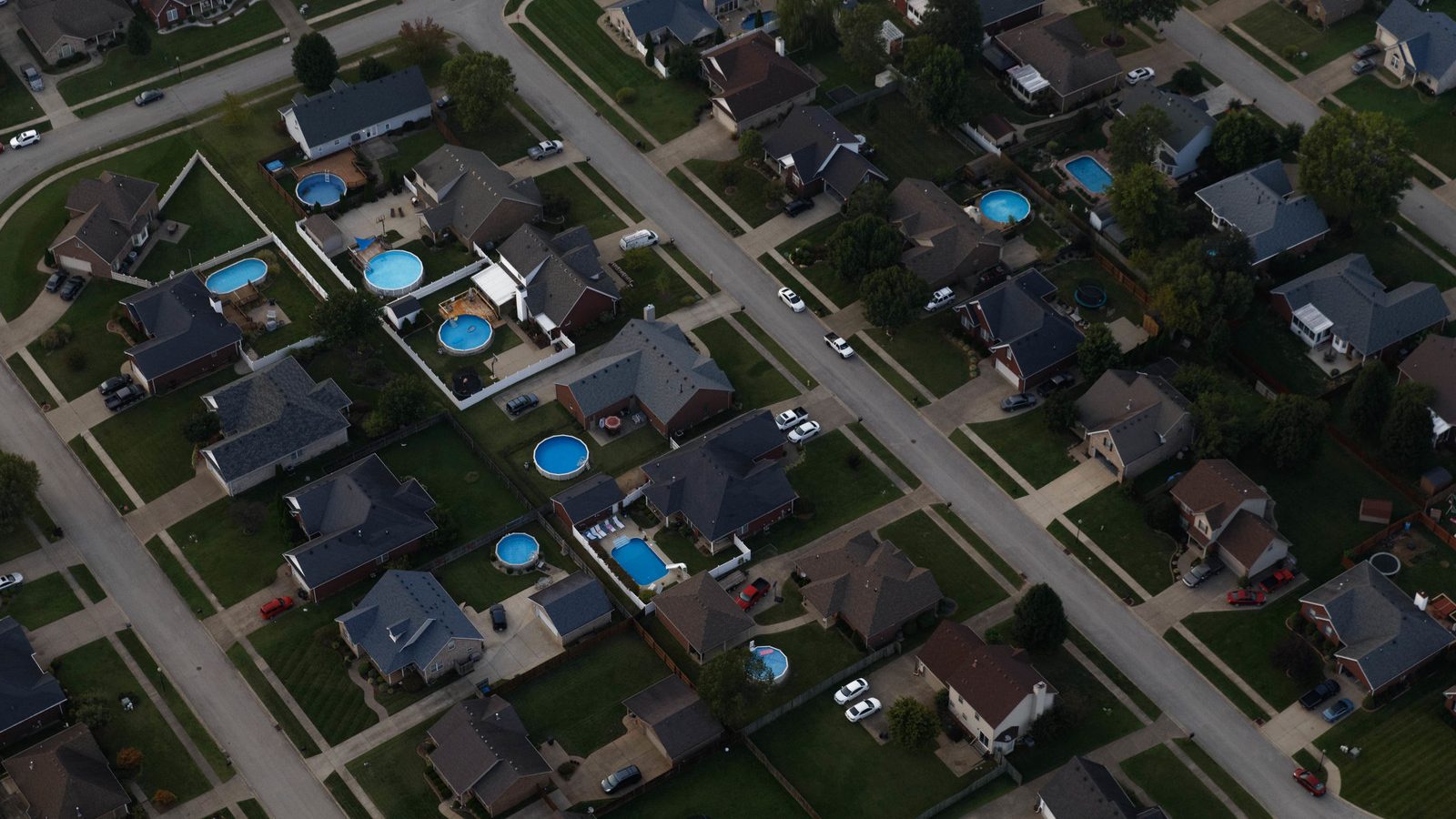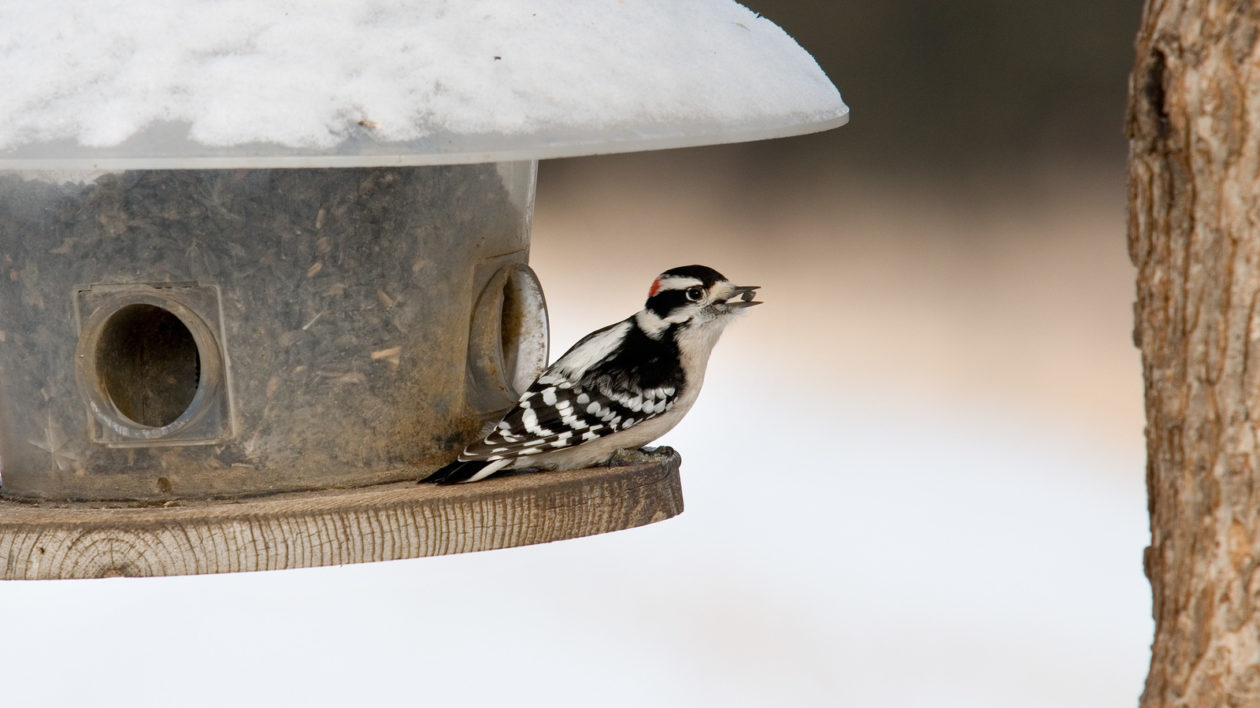Yesterday, I gazed out the window of my home office during a meeting, watching California quail and house sparrows forage beneath native sumac. Suddenly, the bush seemed to explode, with birds flushing in every direction.
A second later, a Cooper’s hawk deftly landed underneath the shrubbery. It began hopping around attempting to snag one of the remaining quail that hunkered down instead of flushing. But the hawk was just a little too late.
Over the years, I’ve noted more frequent sightings of both Cooper’s and sharp-shinned hawks around the neighborhood. You’ve probably noticed the same thing. Across the United States, these two hawk species – both similar looking and in the genus Accipiter – have increasingly colonized urban areas.
A new paper in the Proceedings of the Royal Society B sought to “identify factors that determine the occupancy, colonization and persistence of Accipiter hawks in a major metropolitan area.” In the course of their study, the researchers from the University of Wisconsin-Madison and Cornell Lab of Ornithology found that in the 1990s Accipiter hawks occupied 26 percent of sites around Chicago. After two decades, they occupied close to 67 percent of sites.
It’s a trend reported (often via citizen science) around the country. And a big part of it is the bird feeder in your backyard.
The Return of Raptors
By the mid-20th century, many raptor species, including Cooper’s and sharp-shinned hawks, had declined precipitously. Direct persecution and pesticides had taken a heavy toll. Decades of protection have caused populations to rebound, leading raptors including accipiters to reclaim habitat.
But as the birds spread, they found a new world: one of growing cities. One might initially conclude that predators would not find this new world to their liking, as it was covered in concrete and buildings instead of forests. And that’s certainly true for many wildlife species.

But, as the researchers note in their recent paper, cities present a mix of habitats, including backyards, parks and golf courses with plenty of space. These “novel ecosystems” provide opportunity for cover and also, often, for ample food supplies.
The researchers documented the spread of the two hawk species in Chicago via observation through remote sensing data and Project FeederWatch, a citizen science initiative that has conservationists record sightings throughout the winter.
Initially, the hawks colonized areas outside the city. But they increasingly spread to more and more urbanized areas. The researchers documented usage of areas defined by what they call impervious features: roads, buildings, sidewalks. The more impervious the area, generally, the less “green” habitat.
Initially, hawks avoided these highly developed zones. But eventually, as long as there was sufficient prey, they colonized even the downtown. Over the past two years, hawks went from the city fringes to occupying much of the metropolitan area.
The researchers hypothesized that reforestation would play a role in hawk recolonization. But it didn’t. In fact, wintering hawks preferred areas with fewer trees, perhaps to better hunt prey.

The Hawk at the Feeder
Bird feeding is a hugely popular urban pastime. More than 40 percent of U.S. households feed their backyard birds.
That creates an abundance of birds, concentrated in specific, predictable areas. A predator’s bonanza.
The researchers found that the predator’s persistence in urban areas was most influenced by abundant prey. Based on citizen science and other research across the country, hawks have taken advantage of the bounty of bird feeders across the country.
Cities are rapidly changing. The novel ecosystems they create are also highly dynamic and, often, poorly understood. Songbirds, like northern cardinals, may even expand their range due to feeders. Then predators recolonize, shifting species behavior and abundance.

The researchers cite studies in England that show the recolonization of Eurasian sparrowhawks in cities caused a dramatic decline in house sparrows as well as other species commonly found at bird feeders. The sparrows had exploded in population due to the free food sources and lack of predators. When the predators returned, it caused an immediate shift in the urban ecosystem. It’s not so different, really, than what happened when wolves were reintroduced to Yellowstone and found a park with an over-population of elk.
The researchers note that similar shifts in prey abundance might be expected in Chicago and other cities. Some studies have found that urban hawks are feeding heavily on European starlings, house sparrows and pigeons – all non-native species – so they could actually reduce competition for native songbirds.
Do bird feeders change migration patterns? At least one study found that sharp-shinned hawks on the East Coast were less likely to migrate due to the abundance of bird feeders.
Research into Urban Ecosystems is Vital for the Future of Conservation
Clearly, research into urban ecosystems is vital for the future of conservation. Understanding how species interact, and how species use new habitats, can help better design parks and refuges. Perhaps endangered animals that many consider incompatible with cities actually could recolonize urban areas if given a chance. After all, 50 years ago no one considered the Cooper’s hawk to be an urban bird.
And let’s not forget a key factor in helping scientists understand urban wildlife: you. The observations you make at your bird feeder, at the city park and along a greenbelt trail help researchers understand novel ecosystems and their wild inhabitants. While your observations may seem anecdotal, when combined with millions of other observers, they add up to a significant data set.
So, yes, you really are seeing more hawks at your bird feeder. Enjoy the show this winter: the restoration of the predator-prey dynamic to the urban wild.




So interesting!! Just saw a Cooper’s Hawk in my backyard tree two days ago. Although we have a lot of hawks on Staten Island, I have never seen one at my house. It was exciting. He was there for about 1 1/2 hours and barely moved.
We lived in the city limits of Richmond and had a pair that had a nest and lived in trees above our home. What a treat to see these magnificent birds!
I live in central Houston and we have a yearly pair of cooper’s hawks that nest in out front trees. we also have a pair of red-shouldered hawks in a big oak in the yard behind us. I noticed that the cooper’s feed mostly on abundant white-winged doves with a few other species of songbirds mixed in. The re-shouldered hawks really like to go after the countless squirrels.
So is this why I have zero birds at my feeder this year? I’ve done a thorough cleaning, changed the seed (twice), and still no birds despite cold temperatures. Have not spotted any hawks either.
Thank you for this great article. It used to be that I would see these birds on rare occasions in the city, but now they are frequent visitors at my feeders , and I enjoyed hearing about their adapting to urban habitats. These beautiful birds get blamed for killing songbirds etc…. and they do eat no doubt. But alley cats have always been the main problem . Not the raptors. Thank you.
Thoroughly enjoyed this article, I have Cooper’s Hawk’s in my suburban yard every summer for the past several years I live in a suburb of Chicago. I do have birdfeeders in my yard.
I have many hawks that visit my backyard, including red tails. I do feed the song birds all year long including suet feeders in the winter. I love watching the birds and other wildlife that visit.
Thank you for this wonderful article. The comments are also interesting. We live in a small town in South Dakota and have had Coopers, Sharps and the occasional Red Tail in our backyard for at least 10 years. The hawks usually prey on the sparrows, collared doves and starlings (or so I tell myself!). We have spruce trees next to our feeders that offer good cover. We were curious why the hawks spent a lot of time soaking their feet in our pond and learned they do it to soften their talons and then sharpen them against the rocks. There has been an increase in their visits each year. It’s fun to watch our gutsy squirrels challenge them when they sit too close to the feeders.
January 29, 2019
Today and yesterday I watched a red-shouldered hawk swoop down over my fishpond and head towards the bird feeder.
He was unsuccessful due to the large amount of trees and shrubs close to the feeder and the daylight sky was behind him.
I live in suburban Virginia about 20 miles west of Washington DC which has heavy traffic and medium subdivision density. But luckily behind my half acre There is an approximate 20+ acre forest and small open plain of about 2 acres which leads down to a small stream that meanders through several subdivisions for miles. This area contains much wildlife of everything from red foxes, raccoons , skunks squirrels chipmunks to white tail deer. I would not be surprised if we also have coyotes. Three years ago a mother black bear and her cub were spotted and moved to more rural parts of the state by a combination of state police, forest rangers and other wildlife management officials. I feel fortunate to be able to enjoy so much wildlife but still live so close to the city.
We’ve been enjoying a beautiful red shouldered hawk who has been arriving about 7:30 every morning for the last several days. He? has even picked up food scraps off the ground left out for the crows, sat on a low stone wall holding the food in his feet and tearing it apart.
We are in central Mass and have plenty of woods around our area but also bird feeders.
Last summer and into fall we had two red tail hawks. They are our usual visitor.
A crew working on gas lines in the area would stop their work to watch them circle overhead or perch on a rooftop or tree.
We just love seeing these beautiful birds.
We have noticed a few Coopers Hawks and Swanson’s hunting in our suburbs on the west side of greater Cleveland the last decade or so.
It’s always a treat to see them up close!
Bud Riser
Westlake, OH
I regularly see a red shouldered hawk checking out our feeders. Sometimes we find strike sites in the yard.
I have a neighborhood sharpshinned hawk. He/she was taking mourning doves at my feeder. I had to move the ground feeder to a spot beneath a shrub to make the doves less vulnerable. It worked well in the summer. With the leaves off in the winter, the hawk has managed to have a little success. Still, much less than previously.
Yes we’ve had hawks ate bird feeder . We live on ten acres of woods seven miles outside town. I chase them away all the time. About six years ago they killed one of my wood ducks.
Great article. Is there any research showing changes in migratory routes due to abundance of roadkill? I am writing a novel with that as a theme.